CIMdata PLM Industry Summary Online Archive
3 April 2007
CIMdata News
CIMdata Reports 10.4% PLM Market Growth for 2006; Heavy investments stronger than expected as companies aim for improved top and bottom line performance
According to recent statistics compiled by consulting and research firm CIMdata, Inc., the worldwide Product Lifecycle Management (PLM) market demonstrated significant growth and experienced a stronger than expected year in 2006. CIMdata research indicates that the overall PLM market grew 10.4% to reach $20.1 billion in 2006. This strong growth rate is attributed to continued recognition of the value of PLM in improving companies' business performance. PLM investments are forecasted to continue their climb over the next five years, increasing at a compound annual growth rate of approximately 8.5% to exceed an estimated $30 billion by 2011 ( as shown in Figure 1) .
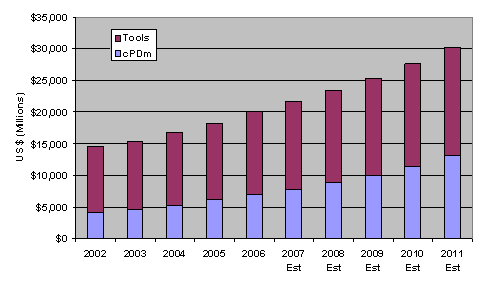
Figure 1-Overall PLM Market Growth History and Forecast
( Estimated for 2007 to 2011 )
PLM is not just a set of technologies, but a strategic business approach that applies a consistent set of business solutions in support of the collaborative creation, management, dissemination, and use of product definition information across the extended enterprise from concept to end of life-integrating people, processes, business systems, and information. PLM forms the product information backbone for a company and its extended enterprise . The PLM industry encompasses investments in many different types of technologies and services.
CIMdata segments the overall PLM market into two primary sub-sectors: PLM information authoring and analysis applications (Tools), and collaborative Product Definition management (cPDm). Historically, the Tools sector has received the largest amount of investment, although growth of that sector has consistently been slower than that for cPDm. However, industry investments in Tools were above forecasts in 2006. According to CIMdata, $13.2 billion was spent in 2006 by companies worldwide on PLM Tools such as mechanical computer-aided design (MCAD), computed-aided manufacturing (CAM), electronic design automation (EDA), engineering simulation and analysis, technical publishing, and others. Growth in this sector was primarily driven by investments in EDA (up 11.9%) and mid-range MCAD (up 11%). Areas such as high-end MCAD and simulation and analysis experienced relatively lower growth. The Tools portion of the PLM market is forecasted to grow at a CAGR of 5.3% over the next five years to reach $17.1 billion by 2011.
The fastest-growing sector of PLM is for expenditures on cPDm, which is focused on collaboration, management, and sharing of product-related information. This segment covers technologies and approaches such as PDM, collaboration and visualization, data exchange, portfolio management, compliance management, strategic sourcing, enterprise application integration, workflow, functional applications such as configuration management, and solutions for specific industries or businesses.
CIMdata research indicates that the cPDm portion of the PLM market met the forecast for growth and reached $6.9 billion in 2006, representing an increase of approximately 12.9% over 2005. The cPDm segment is expected to continue its strong growth to $7.8 billion in 2007 and reach $13 billion by 2011 for a CAGR of 13.6% (as shown in Figure 2).
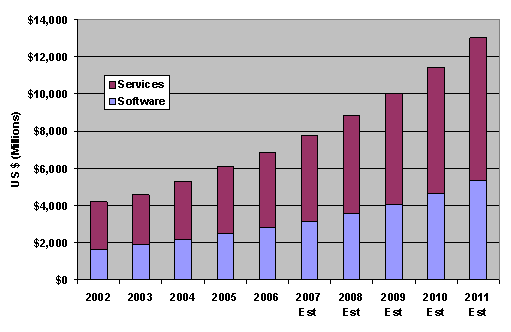
Figure 2 - cPDm Market Growth History and
Forecast
(Estimated for 2007 to 2011)
The Expanding Reach of PLM
"Strong market growth continues to be driven by heavy investments from manufacturers of all sizes implementing PLM in record numbers," explains CIMdata President Ed Miller. "Across a broadening range of industries, some of the world's largest enterprises are improving top-line revenue growth and bottom-line performance as they transform their business processes. Impressive gains are likewise being experienced by smaller and mid-sized firms using PLM to boost productivity and improve competitiveness. With increased investment in both new and expanded PLM solutions, executive decision-makers are taking advantage of the significant business value PLM delivers. PLM is enabling enterprises of all sizes to bring continuous streams of winning products to market more efficiently, accelerate their product development and introduction processes, maintain high quality, and provide greater agility in adapting to rapidly shifting market and competitive trends."
According to Miller, the scope of PLM continues to evolve and expand, extending its reach across the enterprise from product planning and design to production, service, product support and beyond. He notes that the impact of this PLM footprint expansion is that many diverse, previously-isolated disciplines and pockets of automation are now being tightly integrated and efficiently coordinated through unified PLM solutions at a rapidly-growing number of companies.
"PLM is an enterprise enabler for achieving product and process innovation, and it is the foundation of many business initiatives including strategic product planning, integrated product development, design collaboration, supply chain management, digital manufacturing, and global resource utilization," says Miller. "Considering the far-reaching corporate business impact of implementing the approach, PLM has become a critical enterprise investment and is widely regarded by some of the world's most successful companies as a competitive necessity in today's global economy. Now and in the years to come, industry-leading manufacturers with the greatest profitability and success will be those with PLM as part of their corporate strategy."
Strong Growth in All Sectors
Looking deeper into the fast-growing cPDm sector of the overall PLM market, CIMdata statistics indicate that cPDm growth continued in all industry and geographic sectors for 2006. Both EMEA (Europe, Mid-East and Africa) and the Americas maintained solid growth with the Americas growing 14.1% and EMEA up 13.8%. Asia-Pacific continues to be a major opportunity. While the 8.2% growth Asia-Pacific was dominated by Japan, continued investment by solution providers in China and other AP countries should result in increased growth across the region in the coming years. While many AP deals were announced in these emerging markets, revenues are just beginning to flow (see Figure 3 ).
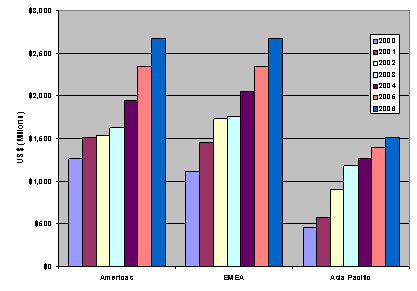
Figure 3 - cPDm Geographic Distribution -
2000 through 2006
( Distribution based on CIMdata revenue estimates )
As shown in Figure 4 , companies in a wide range of industry segments invest in cPDm. Automotive and high-tech continue to be the largest cPDm adopters in 2006. Aerospace and defense (A&D) and fabrication and assembly (F&A), which includes white goods, machine tools, retail and apparel, and others, had solid revenues. All process industry sectors had solid growth. This includes consumer-focused process industries (consumer packaged goods, food and beverage, and pharmaceuticals), petrochemical, and utilities. The 'other' category (shipbuilding, construction, infrastructure and non-traditional sectors) also showed strength based on increasing adoption of PLM by those industries. This across the board growth demonstrates the universality of PLM in providing business value across such a diverse spectrum of industries.

Figure 4 - cPDm Industry Segment Distribution
2006
( Distribution based on CIMdata revenue estimates )
CIMdata Director of Research, Ken Amann, explains that a widely diverse group of suppliers provide PLM-solutions and services. Some of these suppliers focus on specific technologies or industries such as MDA, EDA, CASE, or analysis and simulation. Others deliver broad management and collaboration solutions that are the information backbone for PLM initiatives. Many PLM solution suppliers partner with suppliers of complementary technologies and applications in order to deliver more comprehensive enterprise PLM solutions than each could provide individually. Overall, companies from many different technology and service sectors derive substantial revenues from the PLM market.
Companies that have broad product suites designed to manage the full lifecycle-comprehensive technology suppliers-represent the foundation of PLM. These suppliers continue to expand their product suites to meet the needs of their customers. "Increased end-user investments are being driven by the continually-broadening scope of enterprise-wide implementations, expansion into new areas such as Digital Manufacturing, Strategic Product Planning, compliance management, industry-focused packaged solutions, and integration with other business initiatives such as Customer Relationship Management (CRM)," explains Amann. Both comprehensive PLM technology suppliers and focused application suppliers are packaging their products into solutions that focus on and support, the practices of specific industries (automotive, aerospace, high-tech electronics) and business problems, e.g. compliance. "The growth of supplier-developed 'packaged solutions' is significantly enabling small- and medium-sized businesses to adopt PLM solutions," according to Amann. "Mid-market investment in PLM continues to grow and PLM solution providers are fine-tuning their product suites and pricing models to better meet mid-market requirements for PLM adoption. PLM suppliers (such as Arena Solutions, Aras, and Contact Software) have differentiated themselves by focusing on small- and mid-sized businesses, Other suppliers such as Selerant, Infor, and Lascom are examples of companies differentiating themselves by focusing on specific industries. Many of the larger PLM suppliers provide multiple solutions, each focusing on specific industries and sizes of companies.
Independent consultancies, systems integrators (SIs) and value-added resellers (VARs) (e.g., Accenture, CSC, Deloitte Consulting, HP Consulting, TCS, T-Systems, etc.) continue to expand their PLM programs in response to the growing demand for such services. Major comprehensive technology suppliers expanded their direct service delivery programs and increased their development of alliances with SIs and VARs. "Consultancies and SIs are growing PLM programs by teaming with one or more of the comprehensive technology suppliers as well as expanding their own PLM knowledge staff," stated Amann.
Application suppliers focused on specific technologies and functions that are part of an overall PLM environment continue to expand the PLM footprint. Suppliers such as Accept Software, Centric Software, RuleStream, and Eurostep are examples of companies that are adding extended capabilities and value to PLM implementations. Examples of these expansion and/or niche areas include service-after-sales, strategic sourcing, and materials compliance solutions. The area of simulation and analysis continues to receive substantial emphasis, with expanded solutions to manage these environments and integrate them more fully into a full PLM program emerging and transitioning this sector of the market toward comprehensive enterprise simulation management (ESM) support. Suppliers such as MSC have been quite visible in driving this transition as well as the integrated simulation and analysis initiatives at major broad-based PLM suppliers like Dassault Systèmes and UGS.
Supplier Rankings
Each year, PLM-related technologies and services are provided by more companies representing all sectors of the PLM industry. To illustrate this growing and wide range of companies that participate in the overall PLM market, the suppliers of PLM-related solutions that derived the most revenues from the market are shown in Figure 5. As can be seen from the companies shown, many of these companies do not compete with each other, but focus on a variety of different aspects of PLM. In many cases, these suppliers are partners in providing more complete solutions to the PLM market.

Figure 5-Overall PLM Revenue Leaders 2006
( Revenue information represents CIMdata's estimates )
Reinforcing the growing strength of the PLM market, there are six companies with revenues of more than $1 billion as seen in Figure 5. In addition, a seventh (PTC), is rapidly approaching that milestone.
While there are many companies participating in the PLM market, a few companies have distinguished themselves as "PLM Mindshare Leaders." These companies are typically considered to be at the forefront of the market in terms of either revenue generation or thought leadership. With broad-based capabilities that support a full product lifecycle-focused solution, this group of PLM Mindshare Leaders for 2006 includes Agile, Dassault Systèmes, PTC, SAP, and UGS. In 2005, MatrixOne was also a PLM mindshare leader but was acquired by Dassault Systèmes during 2006. Full PLM-based revenues from these mindshare leaders are shown in Figure 6.
Rankings and statistics in these and subsequent figures reflect the ongoing consolidation within the PLM industry as it matures. In particular, 2006 revenues for Dassault Systèmes (DS) include the full year revenues for MatrixOne (acquired by DS in 2Q 2006), maintaining consistency with previous reporting practices.

Figure 6-PLM Mindshare Leaders' Revenues 2006
( Revenue information represents CIMdata's estimates )
All of the mindshare PLM suppliers sell some or all of their products and services through their own field sales and support organizations. This is their core or direct revenue. Each also has an increased market presence associated with consultancies, systems integrators, value added resellers, and other partners that sell and provide services based on the mindshare leaders' technologies and products. The combined core and partner revenues can greatly expand the visibility and impact of a supplier in the industry, generating a significant market footprint. Based on these combined revenues, global PLM market presence (no double-counting of revenues and royalties) for the PLM Mindshare Leaders is shown in Figure 7.
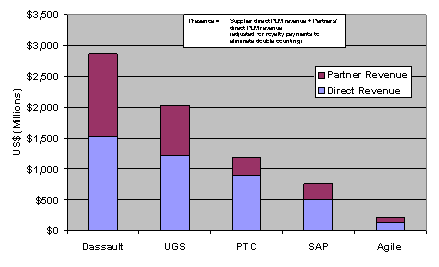
Figure 7-PLM Mindshare Leaders' Presence 2006
( Market presence information represents CIMdata's estimates )
As indicated in Figure 7 , DS was the PLM market presence leader in 2006. The revenue generated by IBM's DS-based PLM services business is a significant contributor to DS' market presence. UGS' partners also generated substantial UGS-based revenue, with EDS being the most significant. Both PTC and SAP also exhibited strong and growing partner programs in 2006 and these provide a very positive impact on their overall market presence as well.
When looking at the cPDm portion of the overall PLM market, a somewhat different perspective emerges. According to CIMdata's revenue estimates for 2006, the top market revenue leaders among the comprehensive cPDm technology suppliers are shown in Figure 8 .
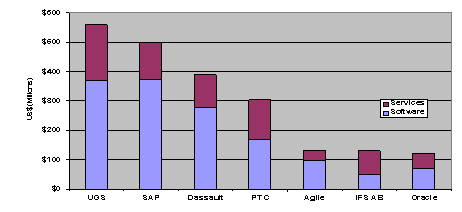
Figure 8-cPDm Revenue Leaders 2006
(Comprehensive Technology Suppliers Only)
( Revenue information represents CIMdata's estimates )
As can be seen in the preceding figure, UGS was the leader in cPDm-only revenues for 2006. For both UGS and DS, the revenues from Digital Manufacturing solutions and services are included within the overall cPDm revenues, consistent with previous years reporting practices. SAP continued to generate substantial cPDm revenues by selling within its installed base. DS and PTC followed UGS and SAP. Agile was joined by IFS AB and Oracle in having cPDm revenues of over $100 million during 2006. As can be seen in the figure, many of these organizations generate a substantial portion of their revenues through services.
Market presence as an indicator of a supplier's overall impact on the market was described previously. Based on these combined revenues, CIMdata's analysis of cPDm market presence for the PLM mindshare leaders is shown in Figure 9 and illustrates the impact that partner revenue has on a supplier's PLM footprint.
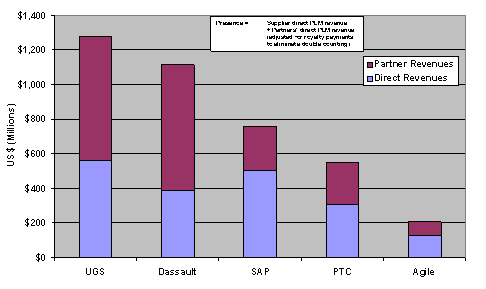
Figure 9-cPDm Market Presence Leaders 2006
(Comprehensive Technology Suppliers Only)
( Market presence information represents CIMdata's estimates )
UGS was the cPDm market presence leader for 2006 with both significant direct revenues and strong partner revenues from EDS and other partners. DS was a close second with IBM generating a significant portion of its partner revenues, followed by SAP, PTC, and Agile respectively,
The PLM market remains robust and will continue to have significant growth over the forecast period (2007 through 2011) as companies continue to invest in solutions that can provide them with sustainable business advantage and profitability. The cPDm sector of the PLM market will be the fastest-growing segment as companies invest to better leverage product and plant information across the lifecycle from concept, through manufacturing, to service and operation. Evolution of PLM's definition and scope will continue to fuel growth in both software and services as PLM becomes more important and embedded within a business' overall enterprise.
Become a member of the CIMdata PLM Community to receive your daily PLM news and much more.
Tell us what you think of the CIMdata Newsletter. Send your feedback.
CIMdata is committed to your privacy. Your personal information will never be sold or shared outside of CIMdata without your express permission.